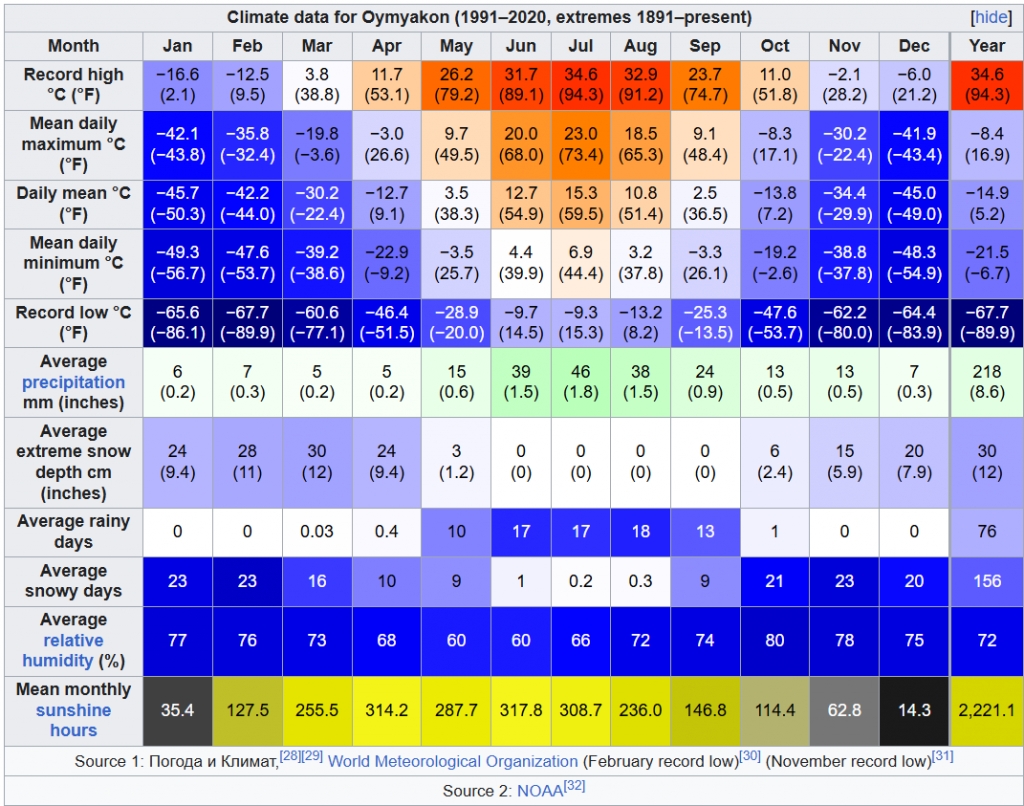
📍 Oymyakon, Sakha Republic (Yakutia), Russia📅 June 11th 2025
Oymyakon—one of the coldest inhabited places on Earth—is experiencing its first summer-like day of the season with a maximum temperature of +26.4 °C. While still far from its June all-time record of +31.7 °C, this warm spell marks a sharp seasonal transition in the remote Siberian highlands.
For such a high threshold (25°C+), the average date of the first summer day in Oymyakon is usually in June, often around:
Mid to late June (roughly June 15–25),
depending on the year and specific weather patterns.
🔹 Why is this Noteworthy?
- Latitude & Climate: Located at about 63°N in northeastern Siberia, Oymyakon is better known for holding world records for cold, with winter temperatures plunging below –60 °C.
- Summer Contrast: Despite its brutal winters, Oymyakon experiences strong continental warming in summer. Days like this highlight just how extreme the seasonal range can be—often over 90 degrees Celsius between winter minimums and summer maximums.
- Close to Record Territory: Though not a new record, +26.4 °C is still significantly above the June average, underlining the increasing warmth reaching even the coldest regions of the Northern Hemisphere.
First Tropical Day for Verkhoyansk
Simultaneously, on June 11th, Verkhoyansk reported its first tropical day (+30.4°C).
Verkhoyansk, a town in Russia’s Sakha Republic located within the Arctic Circle, holds the record for the highest temperature ever recorded north of the Arctic Circle. On June 20, 2020, the temperature reached an unprecedented 38.0°C (100.4°F), surpassing the previous record of 37.3°C (99.1°F) set on July 25, 1988.
Typically, Verkhoyansk experiences its first day with temperatures exceeding 30°C in mid to late June.
🔍 Context: Arctic and Siberian Warming
This event comes amid persistent and abnormal warmth across Siberia in June 2025, with several regions setting records and minimum temperatures remaining above 20 °C deep into the north. This fits a larger pattern of Arctic amplification—the phenomenon where high-latitude regions warm faster than the global average.

Illustration picture – Oymyakon in Winter and in Summer. Source: https://weather.com/science/nature/news/2018-07-13-russian-girl-frozen-eyelashes-siberia-mosquities-selfie

Source: https://en.wikipedia.org/wiki/Oymyakon


























